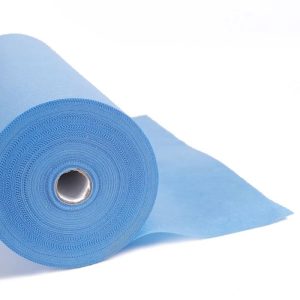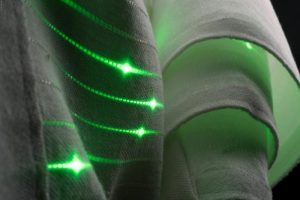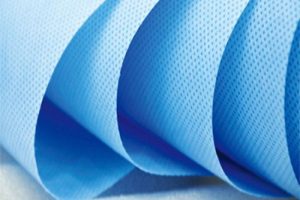Dive into the world of Eco-friendly nonwoven materials, where sustainability meets innovation and eco-consciousness. Get ready for an exciting journey filled with insights and discoveries!
From defining the concept to exploring its applications, this topic promises to shed light on the importance of using eco-friendly materials in today’s world.
Introduction to Eco-friendly Nonwoven Materials
Eco-friendly nonwoven materials refer to textiles that are manufactured without the use of harmful chemicals and are biodegradable or recyclable, making them sustainable options for various industries. These materials are designed to reduce environmental impact and promote a more sustainable future.Using sustainable materials in various industries is crucial for minimizing the carbon footprint and reducing waste production. Eco-friendly nonwoven materials play a significant role in sectors such as fashion, automotive, agriculture, healthcare, and construction by offering a greener alternative to traditional textiles.
Examples of Applications
- 1. Fashion Industry: Eco-friendly nonwoven materials are used in the production of sustainable clothing, shoes, and accessories, providing a more environmentally friendly option for consumers.
- 2. Automotive Sector: These materials are used in car interiors, upholstery, and filters, contributing to reducing emissions and promoting eco-conscious manufacturing practices.
- 3. Agriculture: Nonwoven materials are utilized in crop protection, soil erosion control, and plant coverings, offering biodegradable solutions for sustainable farming practices.
- 4. Healthcare: Nonwoven materials are used in medical textiles, surgical masks, and hygiene products, ensuring a safer and eco-friendly option for healthcare professionals and patients.
- 5. Construction: Eco-friendly nonwoven materials are used in insulation, geotextiles, and landscaping fabrics, providing durable and sustainable solutions for building and infrastructure projects.
Characteristics of Eco-friendly Nonwoven Materials
Nonwoven materials have several key characteristics that make them eco-friendly options for various applications. These characteristics not only contribute to environmental conservation but also offer performance advantages over traditional materials.
Biodegradability
Nonwoven materials made from natural fibers or biodegradable polymers are easily broken down by microorganisms in the environment, reducing waste accumulation and pollution.
Renewable Resources
Eco-friendly nonwoven materials often utilize renewable resources such as bamboo, jute, or cotton, which can be sustainably harvested without causing harm to the environment.
Energy Efficiency
The production of nonwoven materials typically requires less energy compared to traditional materials like woven fabrics or plastics, leading to lower carbon emissions and reduced environmental impact.
Recyclability
Most eco-friendly nonwoven materials can be recycled or repurposed after use, extending their lifespan and reducing the need for virgin materials in manufacturing processes.
Water Conservation
Nonwoven materials often involve processes that consume less water compared to traditional textile manufacturing methods, helping to conserve this precious resource.
Performance Comparison
When compared to traditional materials, eco-friendly nonwoven materials can offer similar or even superior performance in terms of durability, strength, breathability, and comfort. They are also lightweight, flexible, and easy to customize for specific applications.
Production Process of Eco-friendly Nonwoven Materials
In the manufacturing of eco-friendly nonwoven materials, the focus is on utilizing recycled or biodegradable components to reduce environmental impact and promote sustainability. Innovative techniques and technologies are also employed to enhance efficiency and minimize waste during the production process.
Use of Recycled or Biodegradable Components
Recycled plastic bottles, polyester fibers, or other post-consumer waste materials are often used as raw materials in the production of eco-friendly nonwoven materials. By repurposing these items, the need for virgin materials is reduced, decreasing the overall carbon footprint of the manufacturing process. Biodegradable components such as plant-based fibers or polymers are also incorporated to ensure the end product is environmentally friendly and easily degradable.
Innovative Techniques and Technologies
One innovative technique commonly used in the production of eco-friendly nonwoven materials is meltblown technology. This process involves melting polymer resins and extruding them into fine fibers that are then bonded together to create a strong and durable fabric. The use of this technique allows for precise control over the material’s properties and ensures optimal performance in various applications.Another technology that is gaining popularity is needle punching, which involves mechanically interlocking fibers to form a cohesive fabric without the need for chemical binders.
This method not only reduces the use of harmful chemicals but also enhances the breathability and flexibility of the final product.Overall, the production process of eco-friendly nonwoven materials continues to evolve with the integration of sustainable practices and advanced technologies, leading to the development of innovative solutions that benefit both the environment and consumers.
Advantages of Eco-friendly Nonwoven Materials

Using eco-friendly nonwoven materials offers several advantages over conventional materials. These materials are not only sustainable but also contribute to a healthier environment and a more efficient production process.
Cost-Efficiency and Durability
Eco-friendly nonwoven materials are cost-efficient in the long run due to their durability. These materials have a longer lifespan compared to traditional alternatives, reducing the need for frequent replacements. This results in cost savings for businesses and consumers alike.
Reduced Carbon Footprint
By opting for eco-friendly nonwoven materials, industries can significantly reduce their carbon footprint. These materials are made from recycled or biodegradable sources, minimizing the environmental impact of production and disposal. This sustainable approach helps combat climate change and promotes a greener future for all.
Textiles and Nonwovens
Textiles and nonwovens are both materials used in various industries, but they have distinct differences in terms of production and characteristics.
Difference between Textiles and Nonwovens
Textiles are typically made by weaving or knitting yarns together to form a fabric, whereas nonwovens are created by bonding fibers together using various techniques like heat, chemicals, or mechanical processes. This difference in production methods results in textiles having a more structured and durable nature, while nonwovens are often lighter and more flexible.
Applications of Textiles and Nonwovens
- Textiles are commonly used in clothing, home furnishings, and industrial applications like automotive interiors and upholstery.
- Nonwovens, on the other hand, find applications in medical products like surgical masks and gowns, hygiene products like diapers and wipes, as well as filtration and packaging materials.
Sustainability Aspects of Traditional Textiles vs Eco-friendly Nonwoven Materials
Traditional textiles often require more water, energy, and chemicals during production compared to eco-friendly nonwovens. Additionally, nonwovens can be made from recycled or biodegradable materials, making them more environmentally friendly. The use of eco-friendly nonwoven materials can help reduce waste and lessen the impact on the environment compared to traditional textiles.
Final Review

As we wrap up our discussion on Eco-friendly nonwoven materials, remember that small changes in the materials we use can lead to significant environmental impacts. Embrace sustainability and make a difference today!
FAQ Guide
What are the advantages of using eco-friendly nonwoven materials?
Eco-friendly nonwoven materials offer benefits such as reduced carbon footprint, cost-efficiency, and durability compared to conventional materials.
How do eco-friendly nonwoven materials contribute to environmental conservation?
These materials contribute to environmental conservation by using sustainable components in their production process and reducing the overall impact on the environment.
What innovative techniques are used in the production process of eco-friendly nonwoven materials?
Innovative techniques such as incorporating recycled or biodegradable components are used to create eco-friendly nonwoven materials, ensuring a more sustainable manufacturing process.




